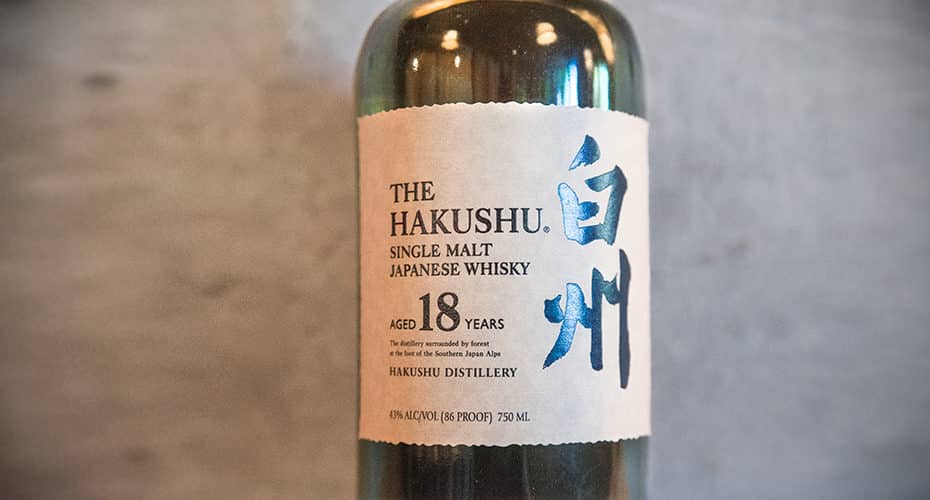The Hakushu 18 is one of the world’s premier single malt whiskies and an icon from Japan. Of course, this rockstar has seen a meteoric rise in price and is getting harder to find.
Is it even worth it?
Absolutely!
In this review, I explore how Hakushu 18 is made and how it tastes. I also take a deep dive into its price and where you might find the best deals. Finally, I compare it to other heavy-hitters and prove pairing tips and service suggestions.
So let’s get started!
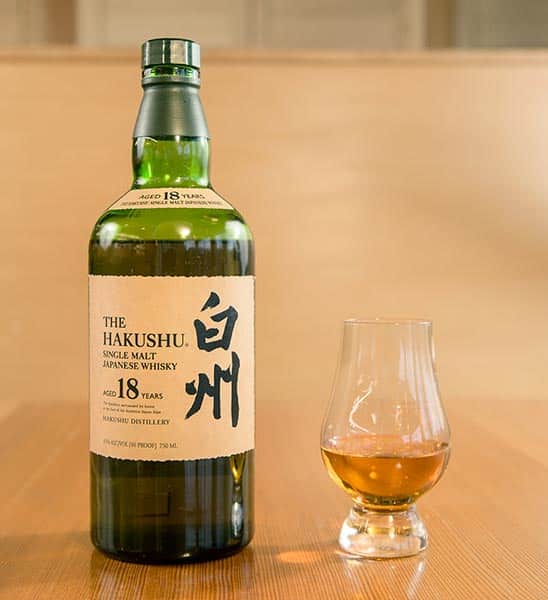
Overview of Hakushu 18-Year Single Malt
The Hakushu 18-year aged single malt is one of Suntory’s premier whiskies. It’s the herbal and crisp stablemate of Yamazaki 18 (more on that later) and the more Scotch-like of the two.
Hakushu whiskies experience less demand than Yamazaki and Hibiki. And so they tend to be a little more affordable. At least, in comparison. Fans of Speyside and Island (Highland) single malts should appreciate this Japanese classic.
Overall, Hakushu 18 is known for its mildly peaty, herbal profile, Bourbon cask influence, and crisp appley finish. But there’s a lot more going on than that. So let’s dive a little deeper into the tasting notes.
Hakushu 18 Tasting Notes
In the glass, Hakushu 18-year has a bronze color with golden highlights. It’s clear this single malt has some age.
Hakushu 18 is an aromatic whisky. Minty notes and lightly peated malt are probably the most noticeable elements at first. But the more I look, the more I find. The nose includes notes of vanilla, cinnamon, almond, green apple, Bartlett pear, orange zest, fresh-cut grass, fresh flowers, and black tea. A lot is going on.
On the palate, this well-aged malt whisky shows its Bourbon cask aging with more spice notes and caramel. Malic flavors are also present, with nutty Sherried notes in the background.
True to Hakushu’s style, this whisky has a mineral and crisp finish. Additional tasting notes include honey, dark chocolate, almond pastry, tobacco, pine, and fruit salad.
Once again, there’s a lot of complexity in Hakushu 18. It’s certainly one of the most impressive Japanese whiskies on the market. But is it worth the price? Let’s explore.
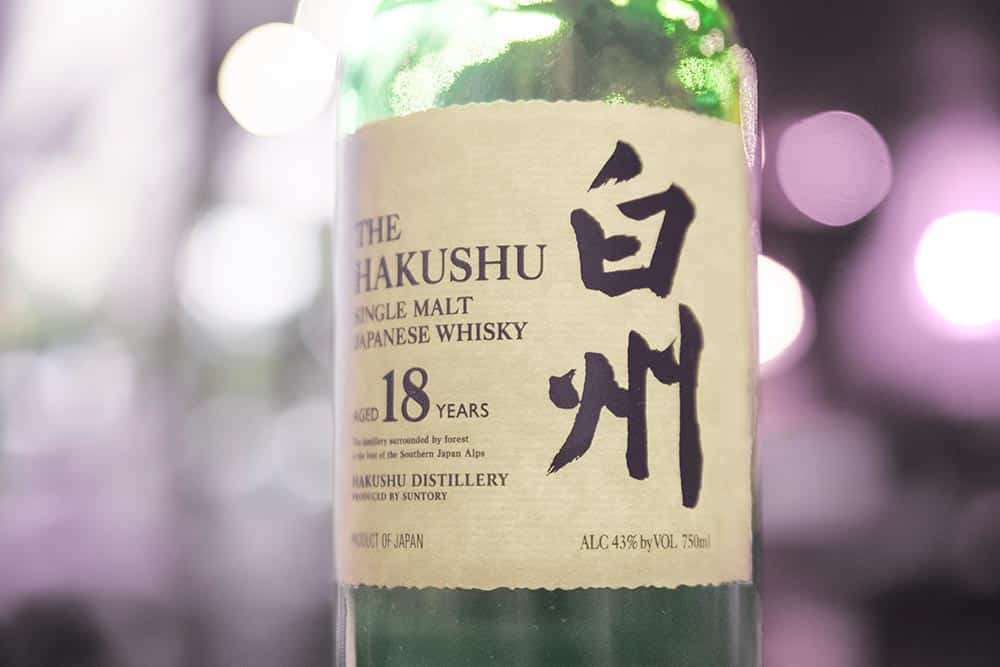
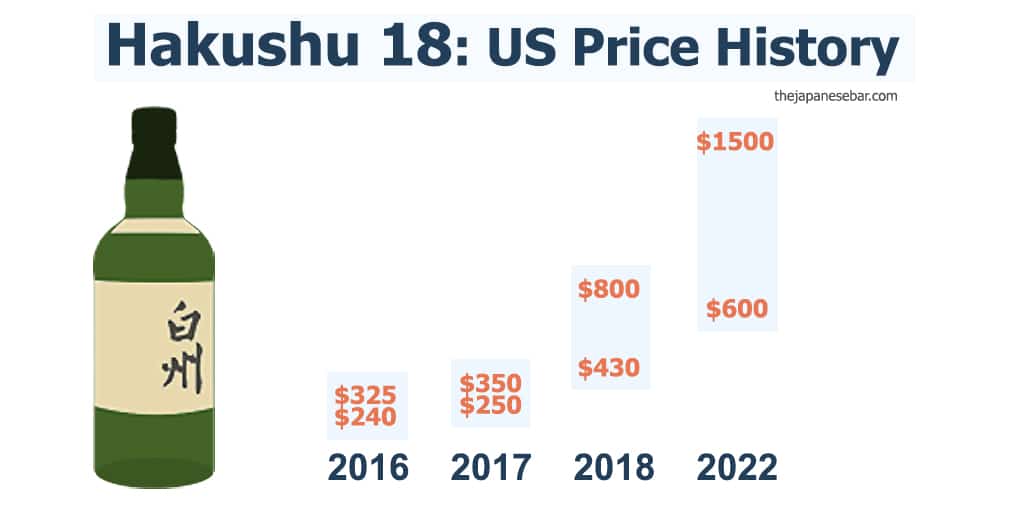
Hakushu 18 Price and Collectibility
As you probably know, the prices of Japanese whiskies are out of control. And this is especially true of authentic heritage brands like Hakushu.
It’s a fact that Hakushu whiskies are generally more affordable than similarly-aged whiskies from Hibiki and Yamazaki. But they’re still more expensive than most equivalent Scotch whiskies.
Hakushu Retail Price and MSRP
In Japan, the suggested retail price of Hakushu 18 years is 25,000 yen (about $220). But in the US, that’s about equal to the wholesale price. And expect that price to increase.
That’s in part because Suntory is raising the prices of many of its whiskies in the spring of 2022. And the more expensive, the greater the increase. Hakushu 18 will increase 28% to 32,000 yen. And you should expect that price increase to be felt in the US too.
And it’s not just Suntory pushing prices higher. The demand for Japanese whisky has fueled heavy price increases from retailers. The difference between the wholesale price of Hakushu 18 and the retail sticker price is huge. Suntory’s MSRP is essentially a joke. A 750 ml bottle of this Japanese whisky sells for an average retail price between $700 and $1000.
That’s double what a bottle cost just a few years ago. Yikes!
All that negativity aside, Hakushu 18 is a spectacular whisky. Getting a good deal requires patience and the ability to walk away from extreme mark-ups.
Big retailers like Costco, Total Wine, Binny’s, and BevMo can sometimes sell Hakushu at decent prices. Smaller private liquor stores are hit or miss but are often the best source of excellent deals.
But tracking down a reasonably priced bottle of Hakushu 18 is a lot of work. That’s why I recommend starting your search online.
Hakushu 18 for Sale Online
Below is a list of online retailers that deliver Hakushu 18. Prices will vary, so be sure to shop around for the best price.
I’m an affiliate advertiser for some of these retailers and may earn commissions on qualifying purchases.

Suntory Hakushu 18 at Restaurants and Bars
Do you want to try Hakushu 18 without shelling out nearly a grand for a bottle? Then restaurants and bars are your best option.
And many times, you can find good deals.
As I alluded to earlier, the wholesale price for this single malt is around $250 for a 750 ml bottle. That comes out to a cost of around $10 per ounce of whisky. So for a 1.5-ounce pour, expect to pay between $45 and $100 (33-15% cost) at a bar.
Most places charge closer to the low end of this range. But it depends on the market and the individual business. And you should also expect prices to continue to rise over time.
Is Hakushu 18 Discontinued?
No, Hakushu 18 isn’t discontinued. But many enthusiasts and industry pros were worried about the possibility. That’s because, in June 2018, Suntory temporarily discontinued Hakushu 12. It was reintroduced a couple of years later. But it scared the crap out of a lot of us.
Suntory increased production of its flagship whiskies once demand started to surge. So I don’t think Hakushu 18 will be going away anytime soon.
Collectibility
All of this market pressure has led to collecting and downright hoarding of Hakushu 18. But is it really a collectible whisky?
Certainly, flipping can be profitable if you find a good price or are a retailer. There’s always someone willing to pay a premium for Hakushu whisky.
But as I mentioned earlier, Hakushu 18 is probably not going anywhere. Yes, the price will continue to rise. But the Japanese whisky market has gone bust before. And there’s no reason to think that consumers may shift away from luxury whisky in the future.
Even a modest decrease in demand would correct the price of Hakushu 18 (and similar whiskies) to reasonable levels.
So for collectibility, you’re better off looking for Hakushu 25 or limited-edition releases from Hakushu.
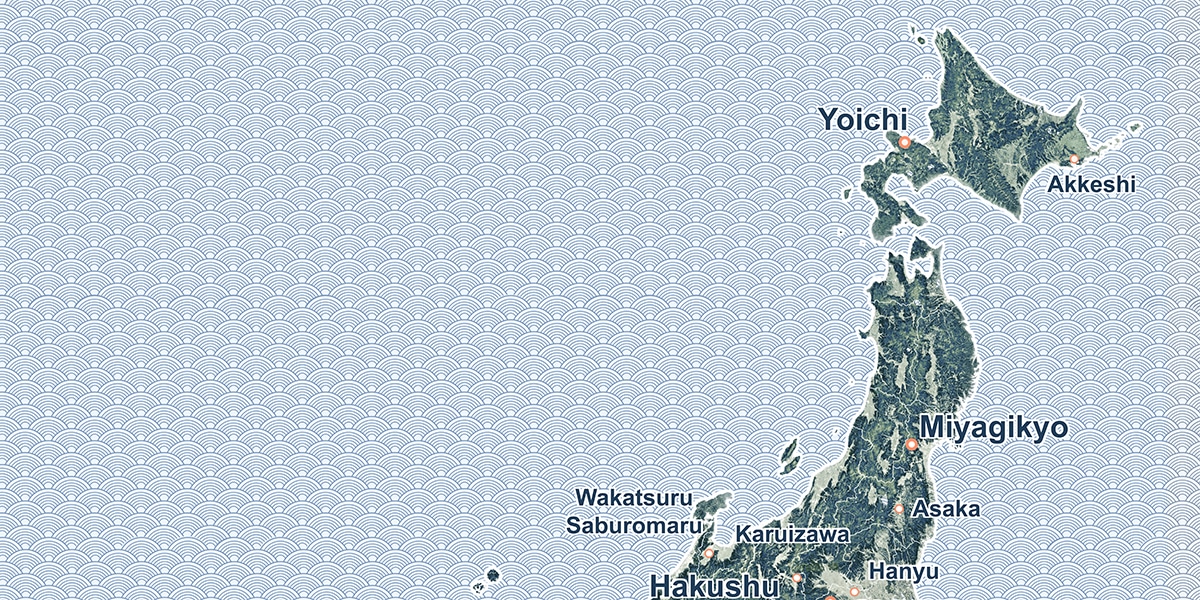
Japanese Whisky Map
25 must-know distilleries.
No fake whisky.
Download your free copy!
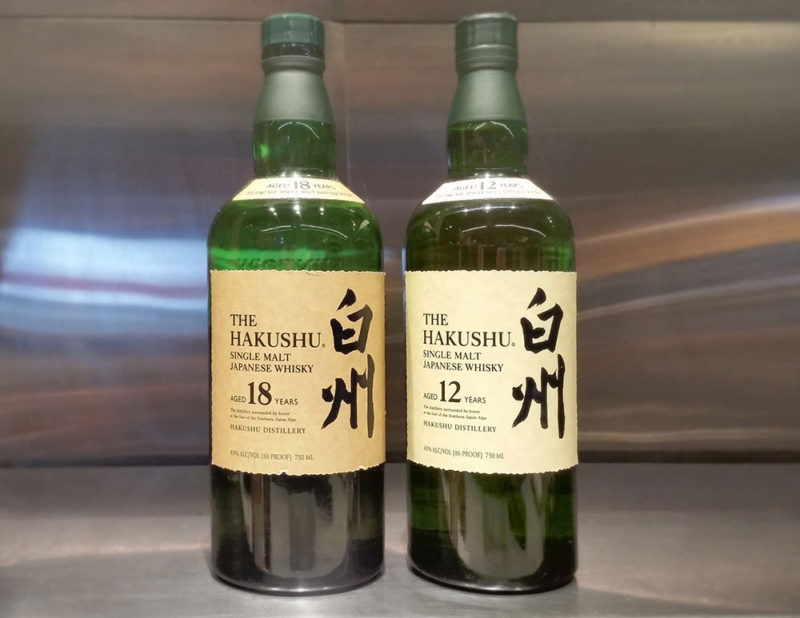
Hakushu 18yr vs the Competition
Enthusiasts often compare Hakushu 18 to a handful of other whiskies. Let’s look at some of the most common.
Hakushu 12 vs 18
Both Hakushu 12 and 18-year have a mildly peaty, Bourbon-forward, appley, and herbal profile. And both have a crisp, mineral finish.
But the 18 year has more nutty Sherry cask influence. And it’s also darker in color and flavor. Notes of caramel, roasted malt, and spice are more intense in this older expression.
That’s not to say it’s better. That’s because the Hakushu 12 costs much less. With an average retail price of $200-250, the Hakushu is a better value. In comparison, anyway.
Check out my Hakushu 12 Year review for the full breakdown of this classic Japanese whisky.
Hakushu 18 vs Yamazaki 18
Hakushu and Yamazaki are the two marquee Suntory whisky distilleries. The Yamazaki came first, and it produces deeply fruity, floral, soft, and semi-sweet single malts. The influence of Japanese mizunara oak is obvious, especially on the higher-end expressions. The Hakushu relies much more on ex-Bourbon casks plus some Sherry cask influence. And the whiskies are much crisper, more mineral, peaty, and herbal.
Climate also makes a big difference. The summers in Yamazaki (Osaka) are also much hotter than in Hakushu (Yamanashi). So whisky from Yamazaki tends to be darker than the equivalent whisky from Hakushu.
These overall comparisons hold true for Yamazaki 18 and Hakushu 18. Suntory releases them both at the same price. But Yamazaki tends to be a little more expensive retail.
Many people prefer the fruitier whiskies from Yamazaki. I like the herbal and crisp Hakushu malts. But everyone is different, so I encourage you to try them side by side if possible.
My Yamazaki 18 year review explores this legendary whisky in-depth.
Nikka Yoichi vs Hakushu
Nikka’s Yoichi distillery is arguably Hakushu’s biggest competitor. This rival distillery makes the original peaty, Scotch-like Japanese whiskies. How do they compare?
Yoichi Single Malt whiskies are peatier, smokier, and roastier than Hakushu. The Hakushu malts tend to be more fruity and mineral in comparison.
Yoichi used to make a wide range of age statement whiskies. But they’ve discontinued them all. In their place, there’s only a NAS bottling and a few limited-edition releases. So it’s hard to compare Hakushu 18 to any current Yoichi whisky. Discontinued Yoichi 15 and 20 year-aged whiskies are still available. But they are extremely expensive.
Other Similar Whiskies
If you’re already a fan of Hakushu whiskies, there are some great alternatives from Scotland. And many of these Scotch whiskies cost much less. Look for age statement whiskies from Macallan, Highland Park, Bunnahabhain, and Caol Ila.
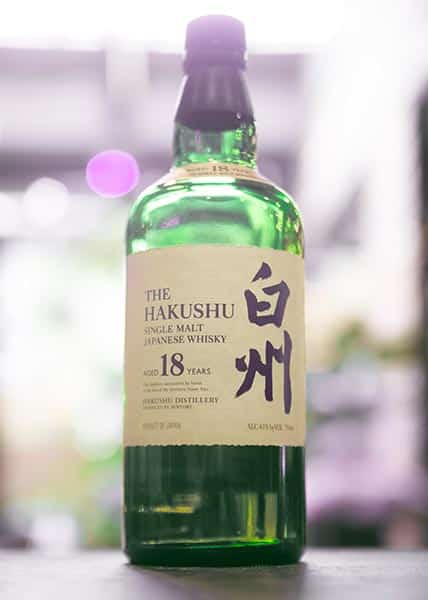
Serving Suggestions
Great whiskies are typically best served neat. But a splash of water can be a nice addition. And at the bar, whiskies on the top shelf can also be warmer than room temperature. So a single small ice cube is my recommendation in this case.
But if you prefer a lighter profile, a large ice cube is a great option. And if you drink fast, Hakushu 18 on the rocks is acceptable.
Hakushu 18yr Single Malt Pairings
Hakushu 18 years is excellent on its own. And that’s how most enthusiasts will enjoy it. It’s a great whisky to finish a meal or with a cigar.
But Hakushu doesn’t have to fill an after-dinner role.
This peaty, crisp Japanese single malt is excellent with raw oysters. I do recommend a splash of water in this case, however.
And dessert is another great opportunity to enjoy Hakushu 18. Look for desserts with caramel, chocolate, and/or vanilla. Creme brulee, pecan pie, and chocolate mousse are just a few desserts to pair with your Hakushu.
Technical Specs
- Single Malt Japanese Whisky
- Made from a blend of imported peated and unpeated malt
- Aged in once-filled Bourbon cask and Sherry cask
- 43% ABV
- Non-chill-filtered and no coloring added
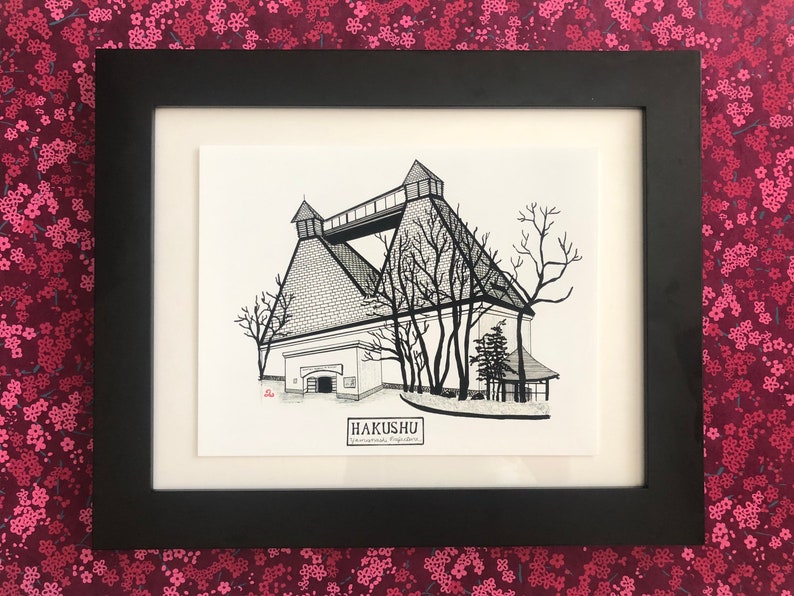
Hakushu Distillery Print
by ForeshotsAndSaints
Get it on Etsy*
As an affiliate advertiser for Etsy, I earn commissions on qualifying purchases.
The Hakushu Distillery
The Hakushu Distillery is the second Suntory distillery, founded in 1973.
Hakushu is often called Suntory’s mountain forest distillery. This is due to the location high in the mountains of Yamanashi.
This cooler climate and higher altitude produce different whiskies than the hotter, lower elevation Yamazaki. And the water Hakushu uses is very soft.
Hakushu is a large distillery with a variety of copper pot stills. This allows the distillers to produce several new make profiles. Later, these are blended to perfection.
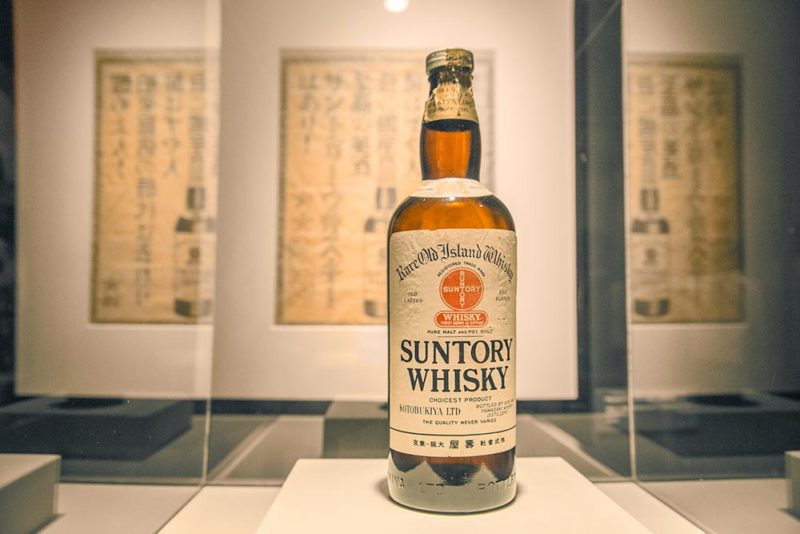
About Suntory Whisky
Suntory is a titan of the global whisky market. Shinjiro Torii founded the company and would go on to open the Yamazaki Distillery in 1923. Torii enlisted the help of another icon to launch this facility: Masataka Taketsuru.
Learn about the brands and history of Suntory from my complete guide.
What do You Think?
If you made it this far, I’d love to hear your thoughts about this iconic whisky. Do you love it or find it overpriced? And how do you think it stacks up against the competition?
Please share your thoughts below!
